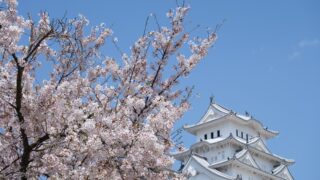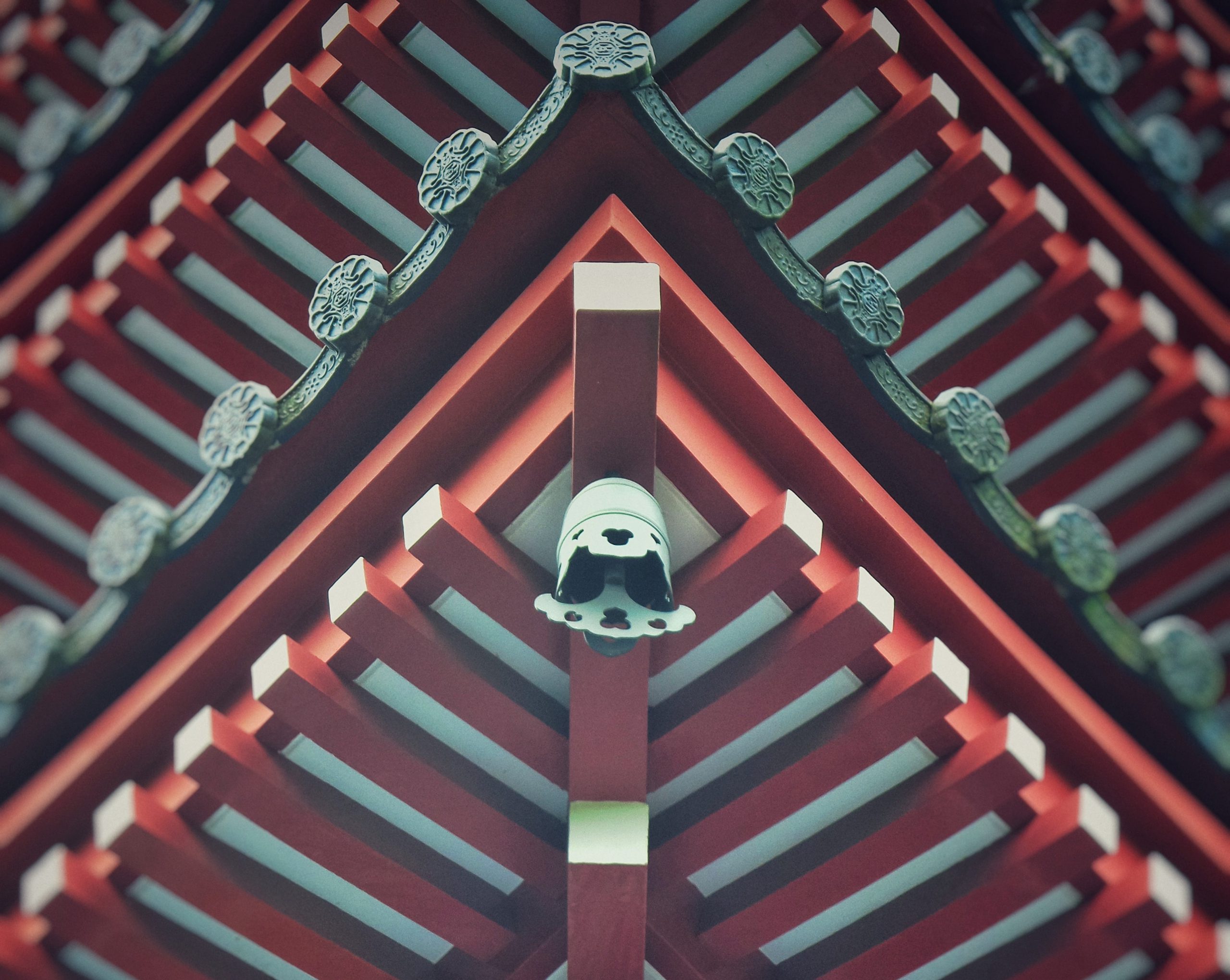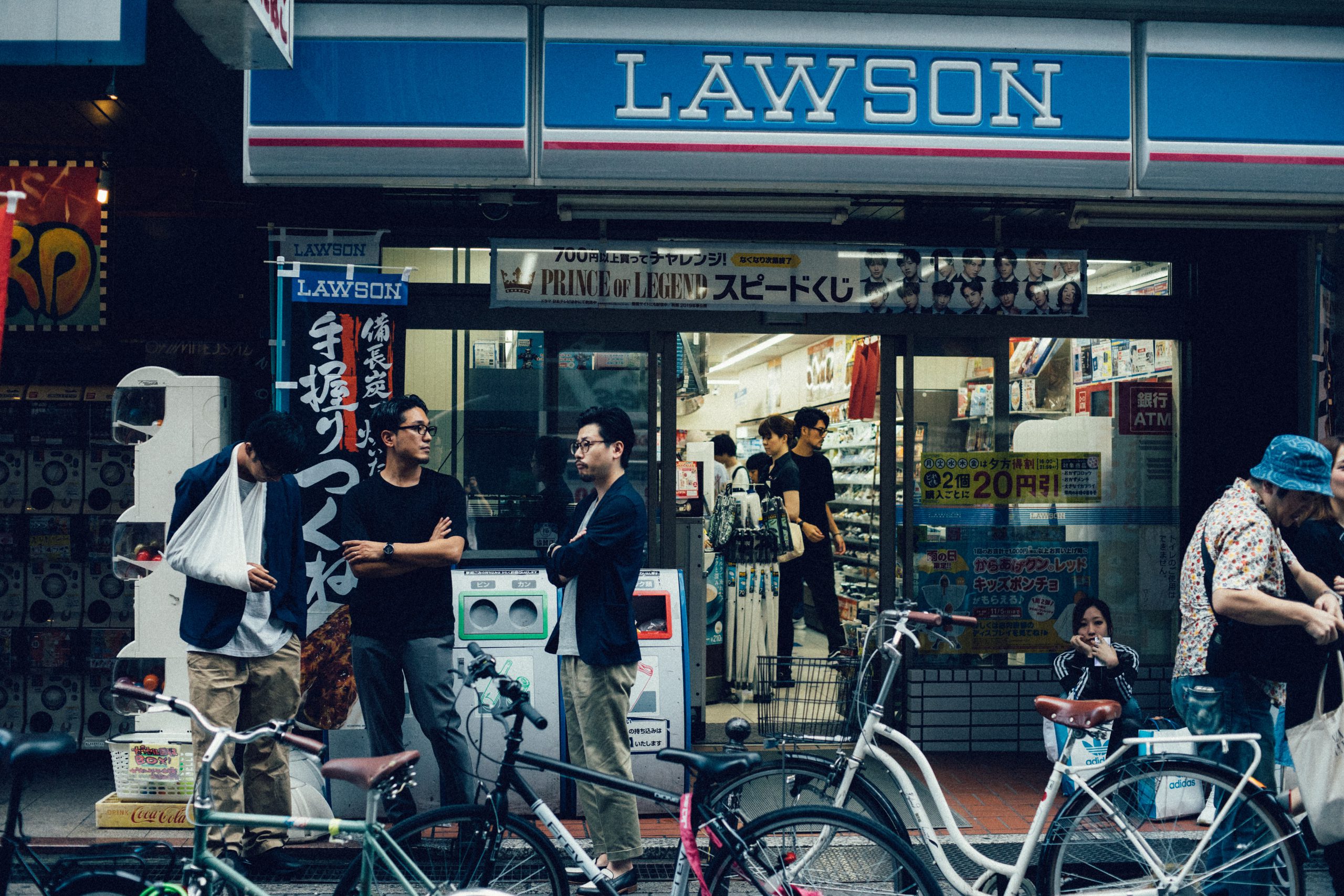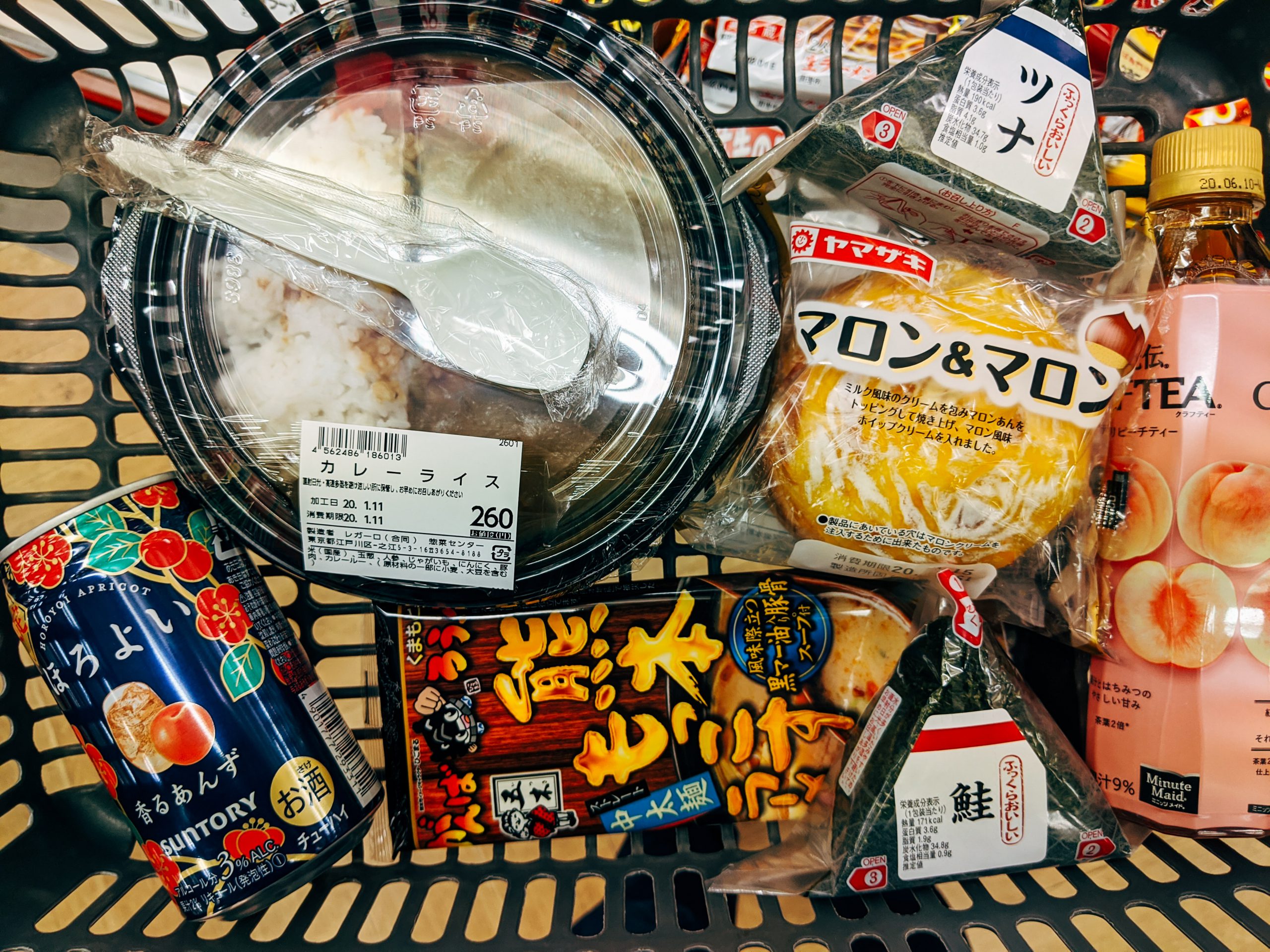Japanese traditional architecture is one of the most distinct features of Japanese culture and you can find unique elements of architecture in castles, temples, shrines, and also homes. But what is the meaning behind it and why the structure has been developed like that? When you understand the details of the traditional architecture, it makes more sense and it will make it more fun to look at the historical sites in Japan! In this article, we introduce the main elements of traditional Japanese architecture.
Wood
Wood is the most preferred material for Japanese traditional buildings due to the constant earthquake. The oldest wooden architecture in Japan is Horyuji temple which is built in the 7th century, and you can still see the beautiful temple after a long history of earthquakes and natural disasters. That’s partly because of wood’s ability of absorbing moisture and Japanese traditional carpentry which allows them to build the buildings without using any nails and developed strong earthquake resistance.
Since ancient times, wood was given great respect by Japanese people and not covered by paint or other coatings when used for buildings. The knots in woods are typically considered as decoration. Japanese cypress, cherry, Japanese cedar, and Japanese zelkova are the most used types of wood for buildings. These woods are appreciated not only for their durability and sturdiness but also for their natural scents. Especially Japanese cypress can be used for a bathtub because the scent of the wood has benefits to relax and even proven to kill bacteria.
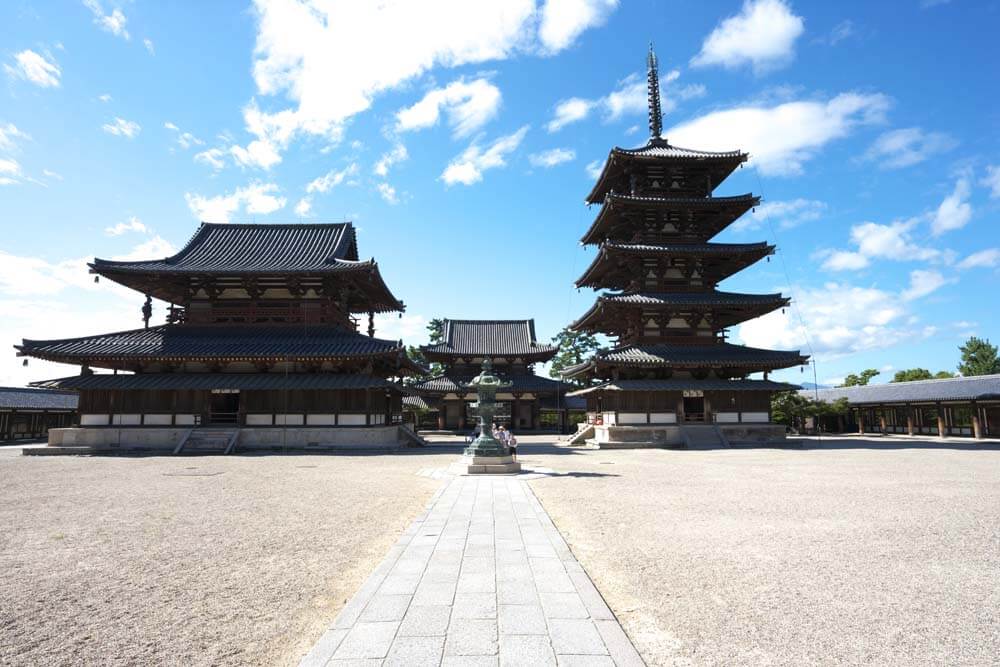

Tatami mats
In traditional Japanese rooms, tatami mats are always used as a flooring material. Tatami are traditionally made of rice straw covered with woven soft rush straw. However, nowadays, tatami sometimes have compressed wood chip boards or polystyrene foam cores. Cloth is used to cover the woven ends. The size of tatami is standardized. Most tatami mat is about 0.9 meters by 1.8 meters, although the size can vary depending on the region. Normally tatami mats are ordered to fit the room size.
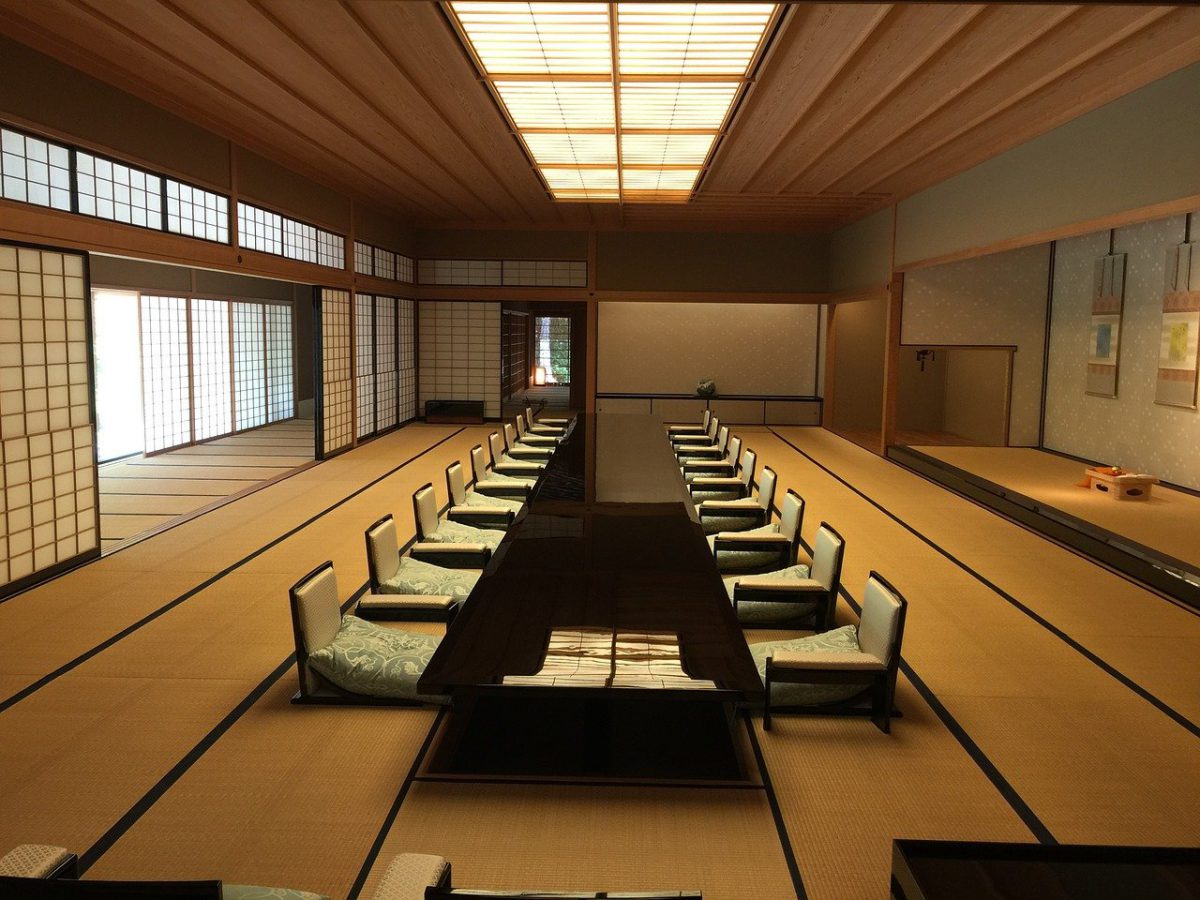
Tatami used to be used only for the highest aristocrats during the Heian Period (794-1185). Over the centuries, tatami were gradually popularized and reached the homes of samurai, ruling nobility, and common people. By the 17th century, it was common that all rooms in a house were tatami-floored. Today houses in Japan have few rooms with tatami flooring, however, tatami mats are still an important component of Japanese architecture. In ryokan (Japanese traditional inn), temples, and shrines, tatami are used in most of the rooms.
A room with tatami flooring can have a decoration space called tokonoma. Tokonoma is a wooded rectangular space which is usually decorated with a Japanese scroll displaying a painting or calligraphy, seasonal flower arrangement and/or other ornaments.
Shoji & Fusuma
Shoji and Fusuma are sliding doors in Japanese traditional houses.
Fusuma are used to divide large rooms into smaller private rooms. Fusuma are also considered as decoration of the room and there are a number of masterpieces preserved to date especially in castles, temples and shrines. For example, Fusuma art in Nijo Castle, Nanzenji Temple, Daitokuji Temple Jukoin, and Chishakuin Temple in Kyoto are very famous and some are designated as National Treasures.
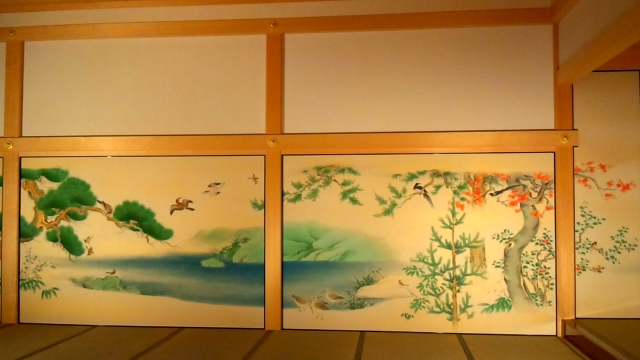
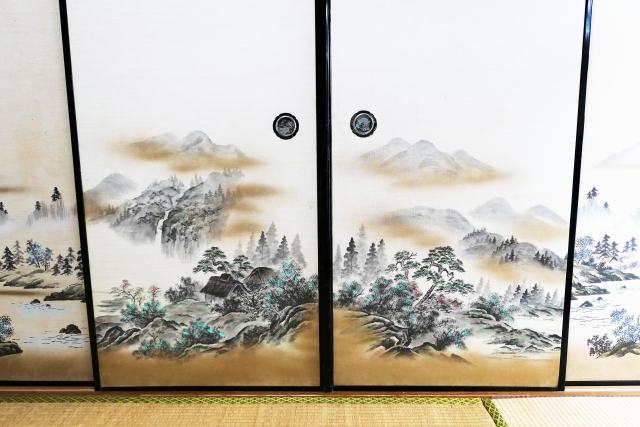
Prior to the 7th century, screens were used to separate spaces in Japanese houses. By the end of the Heian Period (794-1185), Fusuma in a form of sliding doors appeared in the houses of aristocrats. At first silk was used to cover a wooden frame for Fusuma, but after paper was introduced to Japan from China, silk was replaced with Japanese paper called washi. Today, Fusuma is mostly made with washi paper or fabric.
In addition to dividing and decorating spaces, Fusuma also protects from the cold in winter and from the heat in summer for it which has a function of thermal insulation.
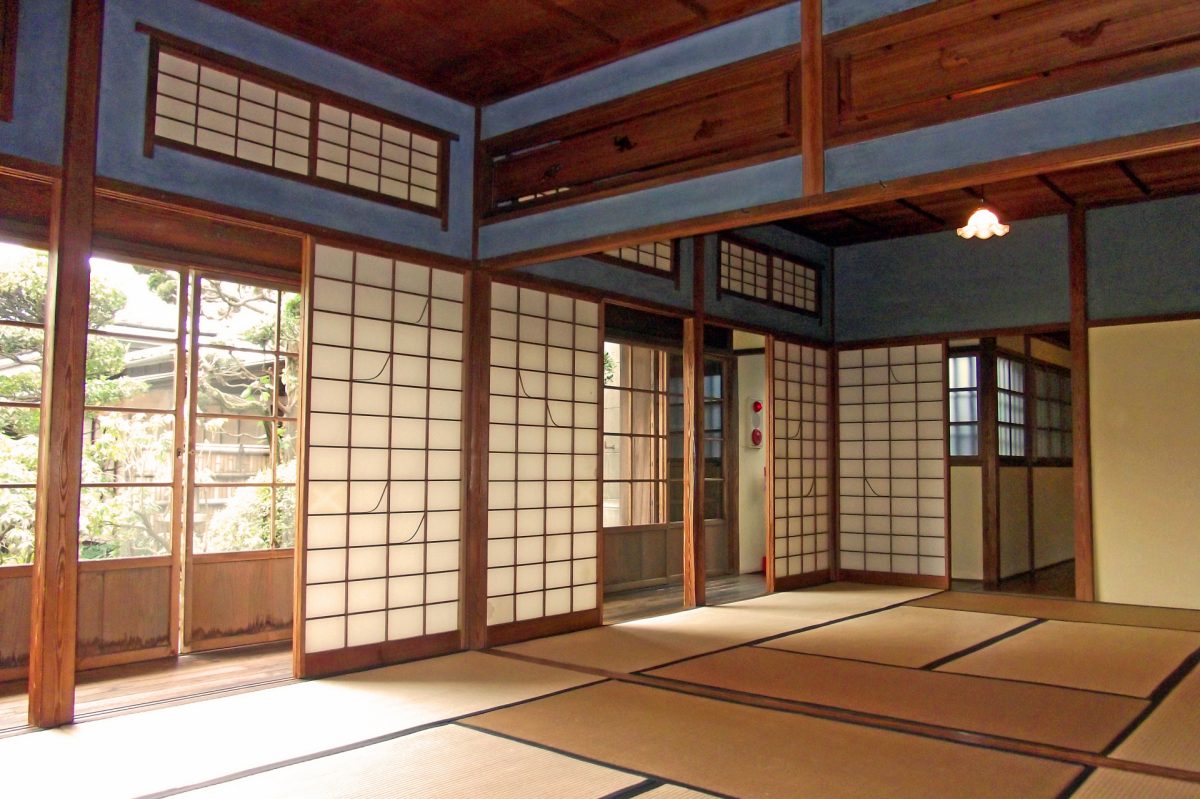
Shoji has sheets of washi paper on a wooden lattice frame and is also used as a door or room divider. While Fusuma is mainly used to separate rooms, Shoji is typically used against windows because the paper used for Shoji is usually white and translucent so that natural light penetrates the room. Like Fusuma, Shoji also has thermal insulation and releases moisture.
Shoji was invented about a century after the appearance of Fusuma. During the Edo Period (1603-1868), decorative patterns of frames started to be used for Shoji. Although today Shoji are not used as often as before in Japanese houses since they are replaced with curtains and glass windows, they are still an important part of Japanese architecture. Shoji have been appreciated by Japanese because they do not set a sharp barrier between the interior and the exterior. Shoji diffuses sunlight into the house while they keep visual privacy. They block wind while allowing air to diffuse through.
Irori
Irori is an open, sunken hearth set within a timber or tatami floor. Irori used to be a standard fixture in Japanese farm houses for heating the home, cooking and boiling water. Irori is usually square and located in the middle of a room where people would gather for warmth and conversation.
In a tea house where Japanese tea ceremony is taking place, a similar hearth can be found to heat up the water for making tea. The hearth in the tea house is called Ro and smaller than Irori which is often found in a farm house.
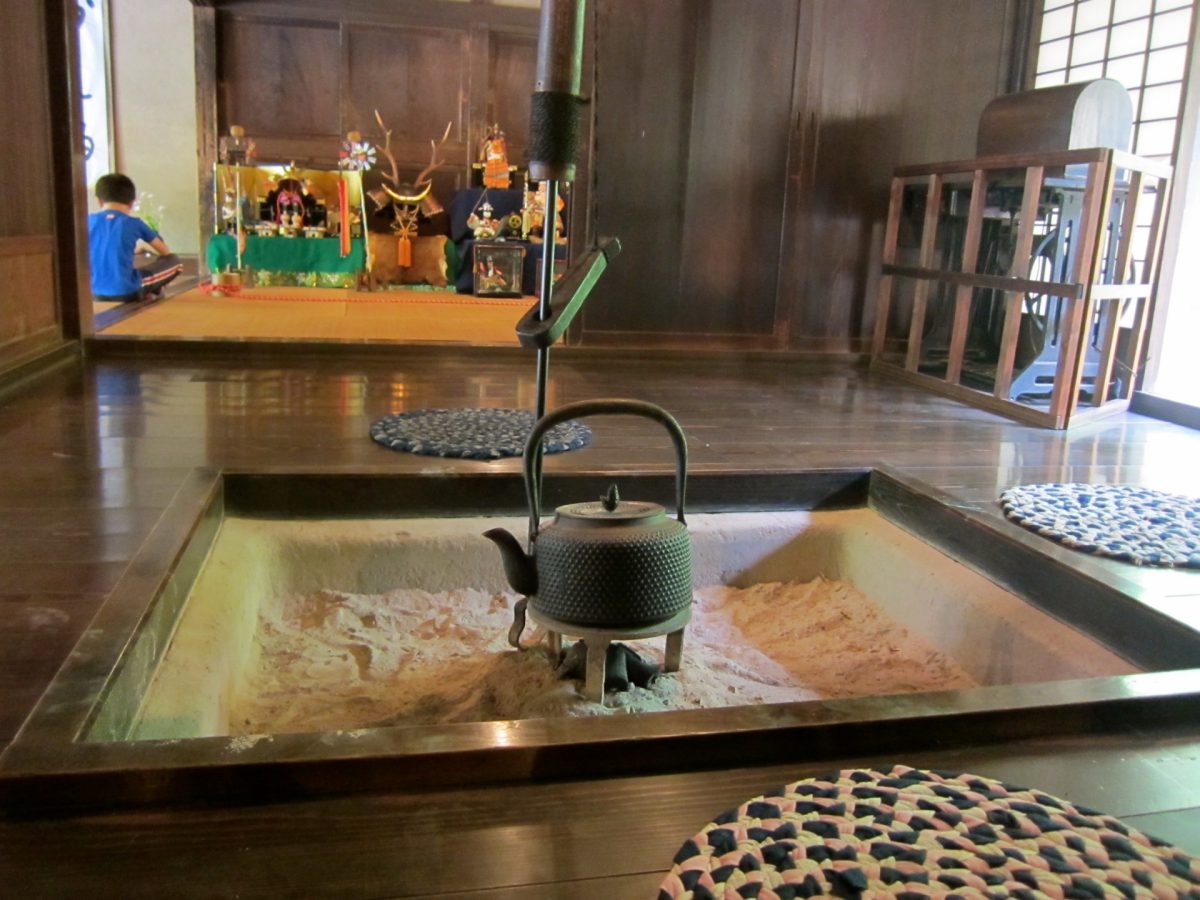
Engawa
Engawa is like an outdoor corridor which is a raised wooden or bamboo veranda that runs around the outside edge of the building. Engawa can be found in Japanese traditional houses as well as temples and shrines and this is where people sit and look out into the garden. For example, in many temples in Kyoto, visitors can sit at Engawa to observe and appreciate the garden or rock garden.
Usually Engawa is outside the Shoji to be separated from rooms. Traditionally the storm shutters called Amado are used to protect Engawa from wind and rain, but modern architecture often encloses Engawa with glass sliding doors.
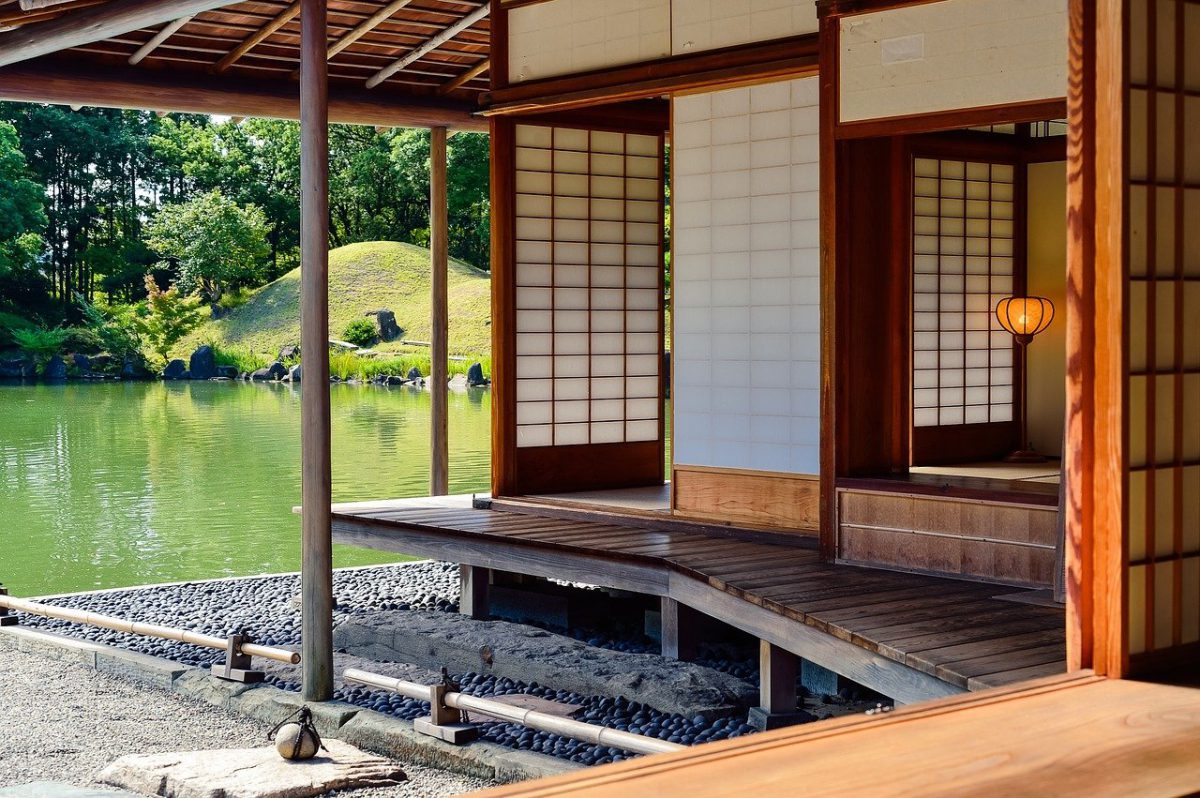
Genkan
Japanese houses always have Genkan, which is the entryway to take off and leave your shoes before entering home. Genkan is usually one step lower than the main level, however, sometimes there may be no difference in elevation between Genkan and the main living space especially in an apartment. After leaving their shoes at Genkan, people often wear slippers inside.
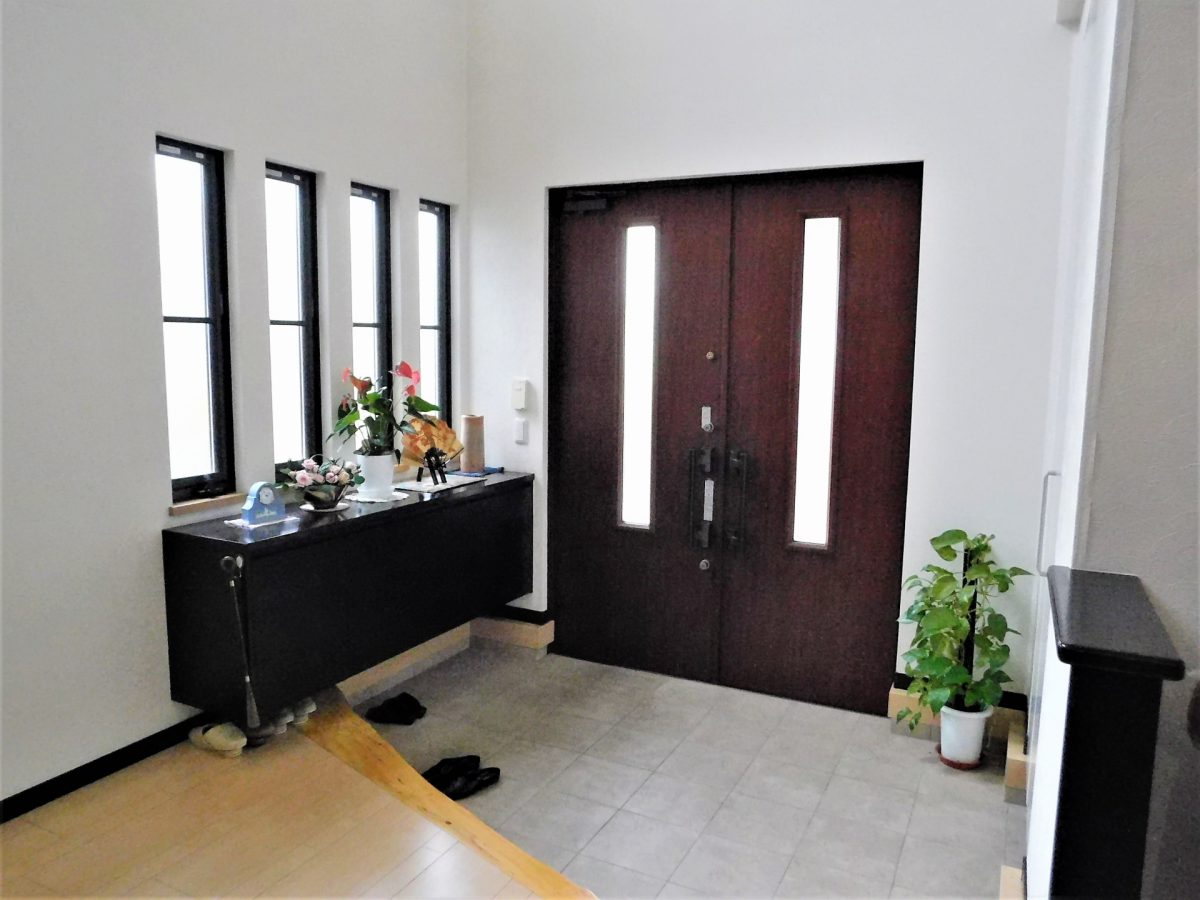
Roof
Roofs are one of the most distinctive features of Japanese architecture. Depending on when, where and what for the building was constructed, the roofs’ structure, design, and materials can vary.
There are basically four types of roofs for Japanese traditional architecture; Kirizuma (gable roof), Yosemune (hip roof), Irimoya (hip-and-gable roof) and Hōgyō (pyramidal roof).
Kirizuma is a roof made simply from two sides connected at the ridge. This is the simplest and most common of the Japanese traditional architectural styles even today.
If the roof slopes down 4 sides and connects with the ridge at the top, it is called Yosemune. Yosemune is the second most common form of roof for Japanese houses after Kirizuma. Example of Yosemune roofs is Todaiji Temple in Nara.
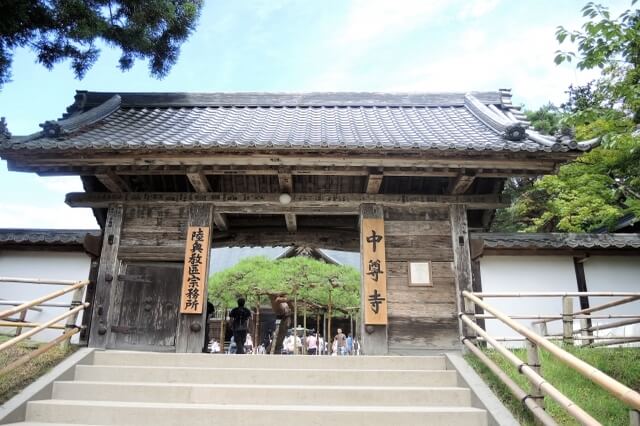
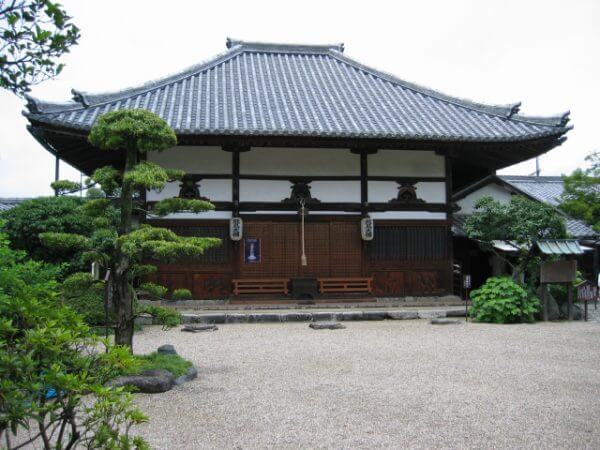
Irimoya is Kirizuma roof on top of Yosemune roof. It is used for the buildings with highest status and commonly seen in castles and temples, although there are a few private residences with irimoya roofs.
Hōgyō is similar to Kirizuma with all four sides of the roof slope down, although there is no ridge and the roof forms a peak. Hōgyō roof is used mostly for the Buddhist constructions and can be built over hexagonal and octagonal buildings.
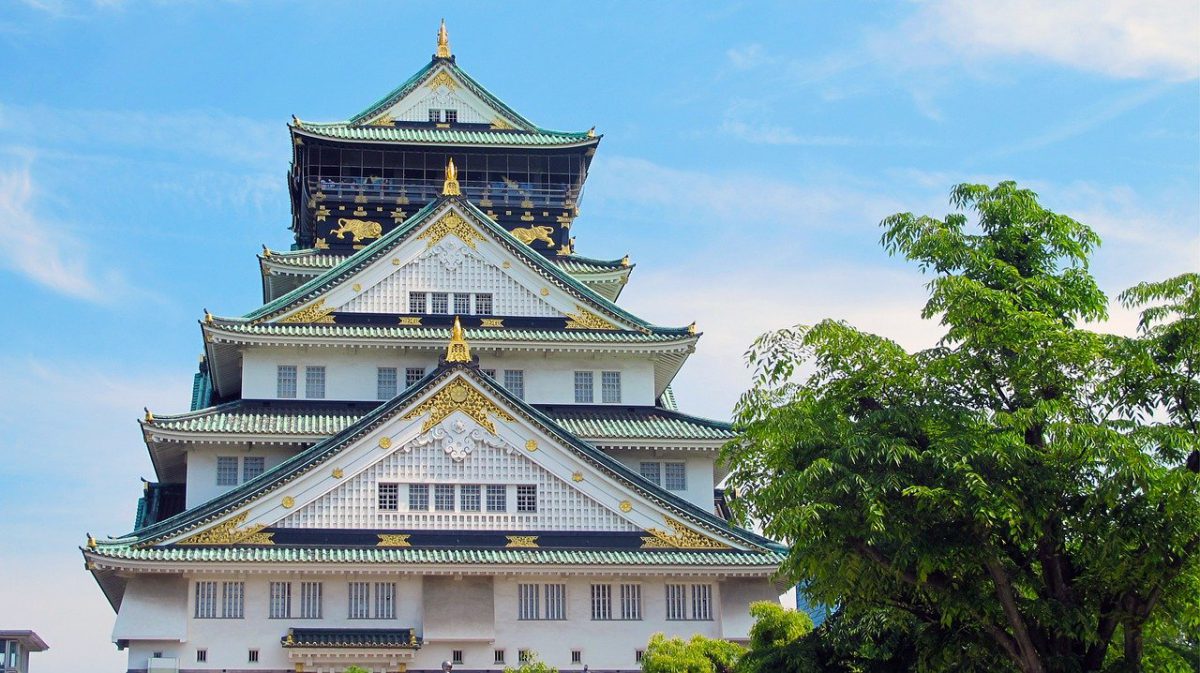
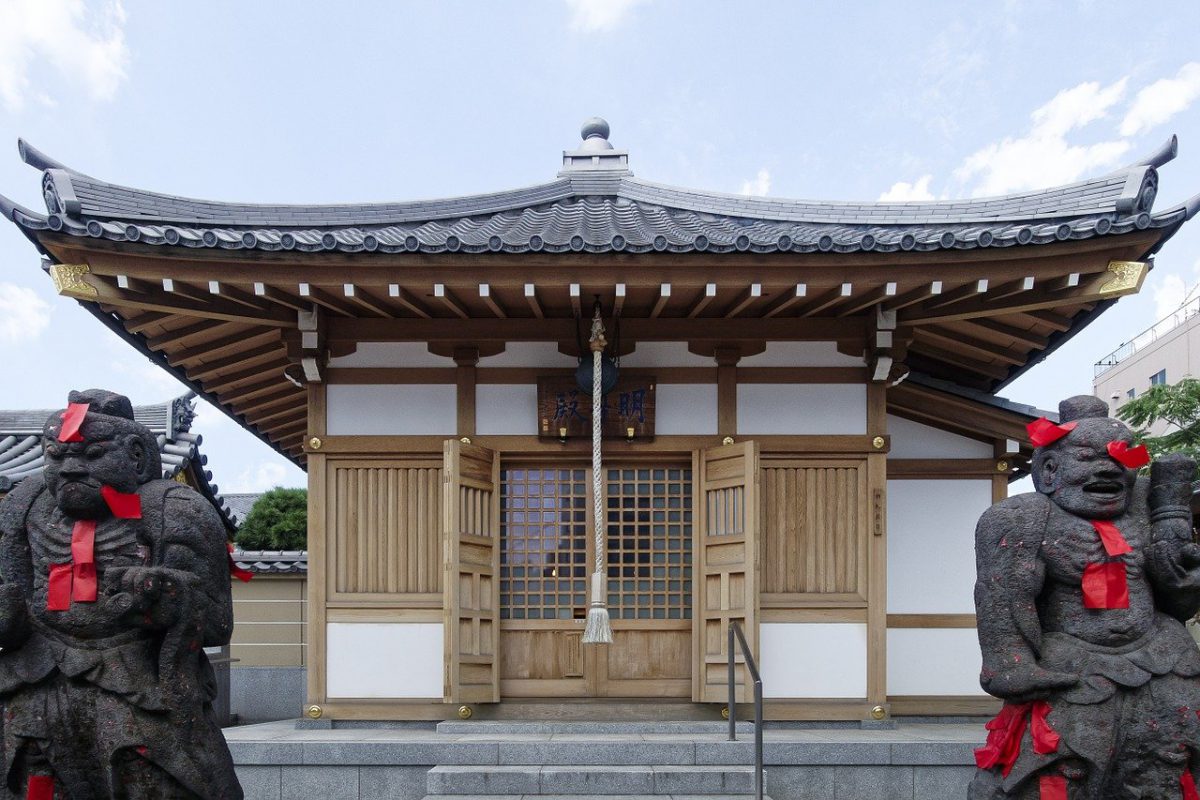
The materials of roofs for traditional Japanese buildings are mostly thatch, tiles, bamboo, metal and stone. Although modern Japanese architects rarely have thatched roofs, they were common until the early 20th century. Thatched roofs were used mainly for private residences for farmers, and today, well preserved thatched roof houses can be popular tourist attractions such as Shirakawago in Gifu Prefecture.
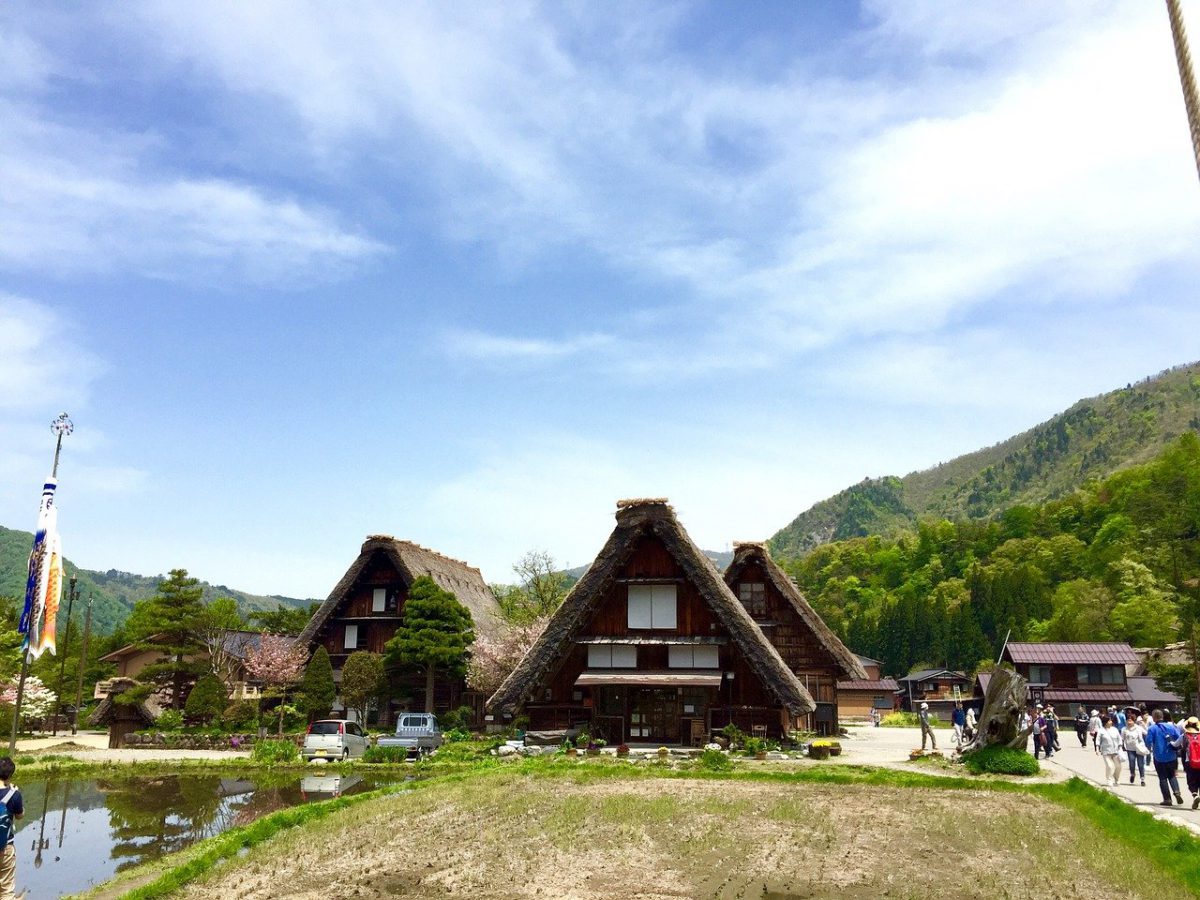
Tiles used for traditional roofs are called kawara. There are several types of kawara in Japan. For traditional Japanese constructions such as castles, temples, and shrines, Hiragawara and Marugawara are arranged neatly along the slope of the roof. In addition, kawara that are used in specific parts of the roof and have decorative, religious, and/or spiritual purposes are called Yakugawara.
Japan Wonder Travel Tours
Japan Wonder Travel is a travel agency offering guided tours in Japan.
From private walking tours to delicious Food and Drink tours, we will organize the best tours for you!
If you want to explore around Japan to learn more histories and backstories of the area, our knowledgeable and friendly guide will happily take you to the best spots!
Also, we can provide you with any assistance for your upcoming trip in Japan, so please feel free to contact us if you have any questions/need some help!
We introduced some of the elements of Japanese traditional architecture. After knowing the basics of Japanese buildings, you may be able to appreciate more when visiting temples, shrines, castles and other historical buildings!
Follow us on Instagram, Facebook and Twitter for more travel inspiration. Or tag us to get featured!
Happy travelling!
Stay informed of the best travel tips to Japan, the most exciting things to do and see, and the top experiences to have with the Japan Wonder Travel Newsletter. Every week we will introduce you to our latest content.
Related articles

